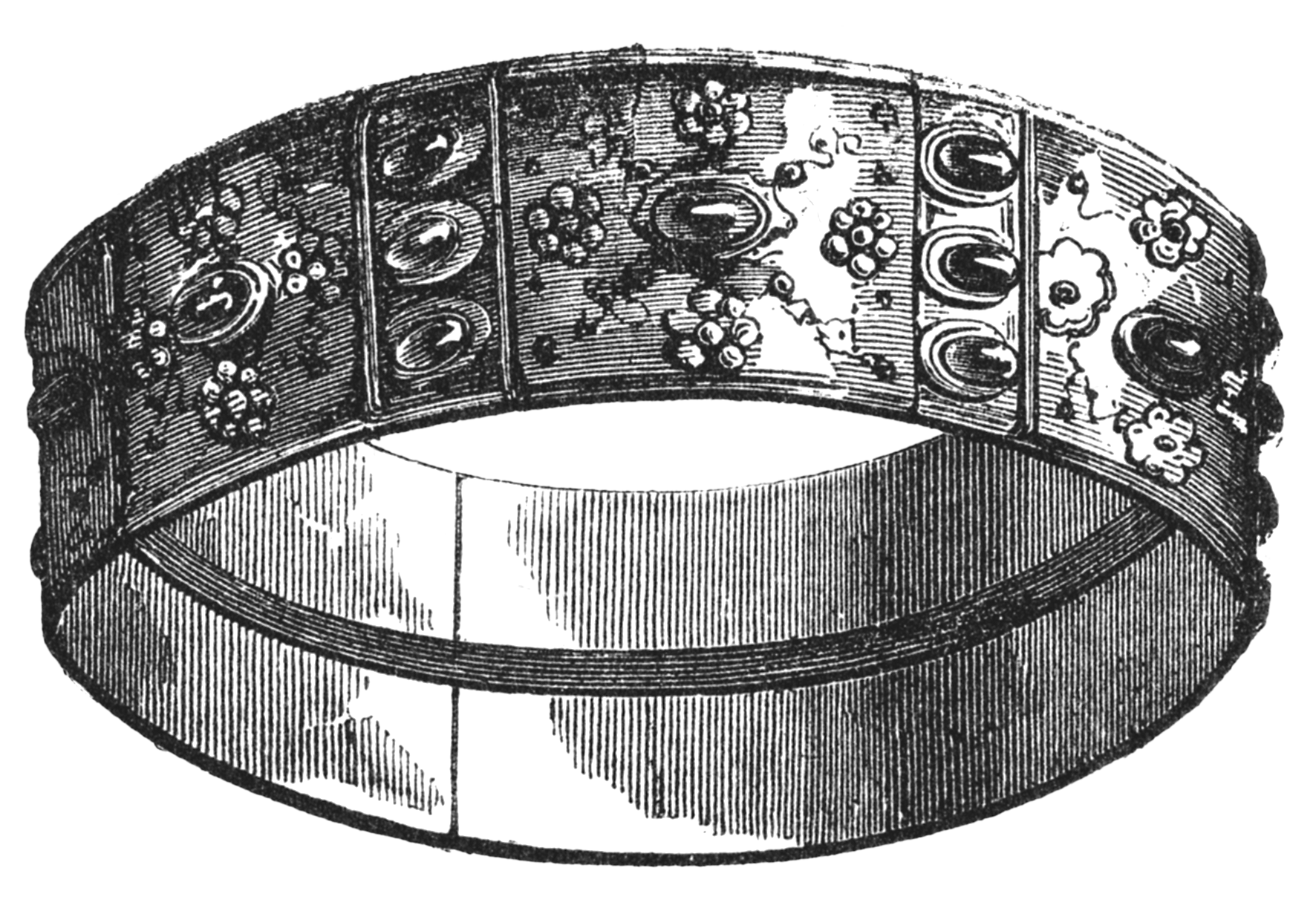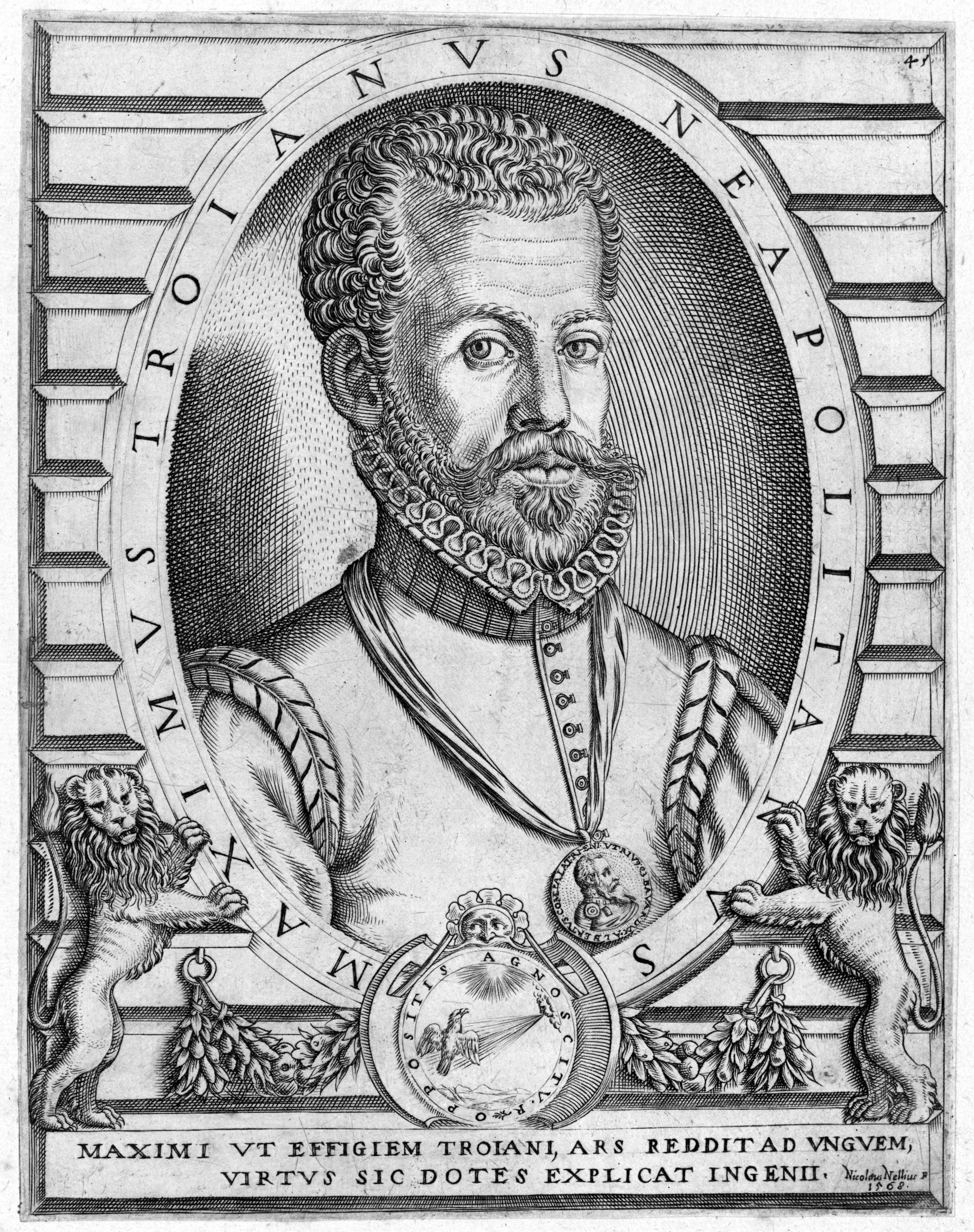|
Renata Of Lorraine
Renata of Lorraine or Renée de Lorraine (20 April 1544 – 22 May 1602) was by birth a member of the House of Lorraine and List of Bavarian royal consorts, Duchess of Bavaria by marriage to William V, Duke of Bavaria. Born in Nancy, France, she was the second child and eldest daughter of Francis I, Duke of Lorraine and Christina of Denmark. Her paternal grandparents were Antoine, Duke of Lorraine and Renée of Bourbon, Renée of Bourbon-Montpensier and her maternal grandparents were Christian II of Denmark and Isabella of Austria. Life Renata was described as a beauty and a desirable match. In 1558, after the death of his first wife William the Silent, Prince William of Orange expressed a desire to marry Renata. Her mother, Christina, liked the idea, and it was further cemented after the Treaty of Cateau-Cambresis. This match was however prevented by King Philip of Spain. Christina declined the plan of Charles, Cardinal of Lorraine, Cardinal of Lorraine to arrange a marriage betwe ... [...More Info...] [...Related Items...] OR: [Wikipedia] [Google] [Baidu] |
List Of Bavarian Consorts
There have been three kinds of Bavarian consorts in history, Duchesses, Electresses and Queens. Most consorts listed are Duchesses. The first ever consort of Bavaria was Waldrada in the 6th century. The final consort was Maria Theresa of Austria-Este (1849–1919), Maria Theresia of Austria-Este in 1913. The longest serving House was the Wittelsbach Dynasty, who played a major role in Bavarian History. During the medieval period under the Wittelsbach Dynasty, Bavaria was split into two parts, Upper and Lower Bavaria. This meant that there may have been more than one Duchess of Bavaria at the same time, due to messy inheritance among heirs. Three of the break-away Wittelsbach families were: Landshut, Munich and Ingolstadt. Since 555 there have been 99 Bavarian consorts: 78 duchesses, 11 queens, 10 electresses and one margravine. The number doesn't add up because Elizabeth of Lorraine and Caroline of Baden, held two titles. There was a few consort that married twice usually their ... [...More Info...] [...Related Items...] OR: [Wikipedia] [Google] [Baidu] |
Nordic Seven Years' War
The Northern Seven Years' War (also known as the ''Nordic Seven Years' War'', the ''First Northern War'' or the ''Seven Years War in Scandinavia'') was fought between the Kingdom of Sweden and a coalition of Denmark–Norway, Lübeck, and Poland–Lithuania between 1563 and 1570. The war was motivated by the dissatisfaction of King Frederick II of Denmark with the dissolution of the Kalmar Union, and the will of King Eric XIV of Sweden to break Denmark's dominating position. The fighting continued until both armies had been exhausted, and many men died. The resulting Treaty of Stettin was a stalemate, with neither party gaining any new territory. Context The Kalmar Union of the three former Scandinavian Kingdoms of Sweden, Norway, and Denmark lasted on and off from 1397 to 1523, until it finally collapsed following the continued Swedish resentment of Danish domination.Bjørn Poulsen About Denmark > History > The Middle Ages > The Kalmar Union">Home > About Denmark > History > T ... [...More Info...] [...Related Items...] OR: [Wikipedia] [Google] [Baidu] |
Oscar I Of Sweden
Oscar I (born Joseph François Oscar Bernadotte; 4 July 1799 – 8 July 1859) was King of Sweden and Norway from 8 March 1844 until his death. He was the second monarch of the House of Bernadotte. The only child of King Charles XIV John, Oscar inherited the thrones upon the death of his father. Throughout his reign he would pursue a liberal course in politics in contrast to Charles XIV John, instituting reforms and improving ties between Sweden and Norway. In an address to him in 1857, the Riksdag declared that he had promoted the material prosperity of the kingdom more than any of his predecessors. Early life and family Oscar was born at 291 Rue Cisalpine in Paris (today: 32 Rue Monceau) to Jean-Baptiste Jules Bernadotte, then-French Minister of War and later Marshal of the Empire and Sovereign Prince of Pontecorvo, and Désirée Clary, Napoleon Bonaparte's former fiancée. He was named ''Joseph'' after his godfather Joseph Bonaparte, who was married to his mother's elder sis ... [...More Info...] [...Related Items...] OR: [Wikipedia] [Google] [Baidu] |
Josephine Of Leuchtenberg
Joséphine of Leuchtenberg (Joséphine Maximilienne Eugénie Napoléone de Beauharnais; 14 March 1807 – 7 June 1876) was Queen of Sweden and Norway from 8 March 1844 to 8 July 1859 as the wife of King Oscar I. She was also Princess of Bologna from birth and Duchess of Galliera from 1813. She was regarded as politically active during the reign of her spouse and acted as his political adviser, actively participating in government affairs. She is acknowledged as having introduced more liberal laws regarding religion. Early life Joséphine was born on 14 March 1807 in Milan, Italy. She was the first of six children of Eugène de Beauharnais, Duke of Leuchtenberg (1781–1824), and his wife, Princess Augusta of Bavaria (1788–1851). Her paternal grandmother and namesake was Joséphine Tascher de La Pagerie, the first wife of Napoleon; she was given the name 'Joséphine' by Napoleon's request.Robert Braun (1950). ''Silvertronen, En bok om drottning Josefine av Sverige-Norge''. (''Th ... [...More Info...] [...Related Items...] OR: [Wikipedia] [Google] [Baidu] |
Margrethe II Of Denmark
Margrethe II (; Margrethe Alexandrine Þórhildur Ingrid, born 16 April 1940) is Queen of Denmark. Having reigned as Denmark's monarch for over 50 years, she is Europe's longest-serving current head of state and the world's only incumbent female monarch following the death of Elizabeth II of the United Kingdom. Born into the House of Glücksburg, a cadet branch of the House of Oldenburg, Margrethe is the eldest child of Frederick IX of Denmark and Ingrid of Sweden. She became heir presumptive to her father in 1953, when a constitutional amendment allowed women to inherit the throne. Margrethe succeeded her father upon his death on 14 January 1972. On her accession, she became the first female monarch of Denmark since Margrethe I, ruler of the Scandinavian kingdoms in 1375–1412 during the Kalmar Union. In 1967, she married Henri de Laborde de Monpezat, with whom she had two sons: Crown Prince Frederik and Prince Joachim. Margrethe is known for her strong archaeological pas ... [...More Info...] [...Related Items...] OR: [Wikipedia] [Google] [Baidu] |
Carl XVI Gustaf Of Sweden
Carl XVI Gustaf (Carl Gustaf Folke Hubertus; born 30 April 1946) is King of Sweden. He ascended the throne on the death of his grandfather, Gustaf VI Adolf, on 15 September 1973. He is the youngest child and only son of Prince Gustaf Adolf, Duke of Västerbotten, and Princess Sibylla of Saxe-Coburg and Gotha. His father died on 26 January 1947 in an airplane crash in Denmark when Carl Gustaf was nine months old. Upon his father's death, he became second in line to the throne, after his grandfather, the then Crown Prince Gustaf Adolf. Following the death of his great-grandfather, King Gustaf V, in 1950, Gustaf Adolf ascended the throne and thus Carl Gustaf became Sweden's new crown prince and heir apparent to the throne at the age of four. Shortly after he became king in September 1973, the new 1974 Instrument of Government took effect, formally stripping Carl XVI Gustaf of his remaining executive power. As a result, he no longer performs many of the duties normally accorde ... [...More Info...] [...Related Items...] OR: [Wikipedia] [Google] [Baidu] |
Harald V Of Norway
Harald V ( no, Harald den femte, ; born 21 February 1937) is King of Norway. He acceded to the throne on 17 January 1991. Harald was the third child and only son of King Olav V of Norway and Princess Märtha of Sweden. He was second in the line of succession at the time of his birth, behind his father. In 1940, as a result of the German occupation during World War II, the royal family went into exile. Harald spent part of his childhood in Sweden and the United States. He returned to Norway in 1945, and subsequently studied for periods at the University of Oslo, the Norwegian Military Academy, and Balliol College, Oxford. Following the death of his grandfather Haakon VII in 1957, Harald became crown prince as his father became king. A keen sportsman, he represented Norway in sailing at the 1964, 1968, and 1972 Olympic Games, and later became patron of World Sailing. Harald married Sonja Haraldsen in 1968, their relationship having initially been controversial due to her sta ... [...More Info...] [...Related Items...] OR: [Wikipedia] [Google] [Baidu] |
Munich Residenz
The Residenz (, ''Residence'') in central Munich is the former royal palace of the Wittelsbach monarchs of Bavaria. The Residenz is the largest city palace in Germany and is today open to visitors for its architecture, room decorations, and displays from the former royal collections. The complex of buildings contains ten courtyards and displays 130 rooms. The three main parts are the Königsbau (near the Max-Joseph-Platz), the Alte Residenz (Old Residenz; towards the Residenzstraße) and the Festsaalbau (towards the Hofgarten). A wing of the Festsaalbau contains the Cuvilliés Theatre since the reconstruction of the Residenz after World War II. It also houses the Herkulessaal (Hercules Hall), the primary concert venue for the Bavarian Radio Symphony Orchestra. The Byzantine Court Church of All Saints (Allerheiligen-Hofkirche) at the east side is facing the Marstall, the building for the former Court Riding School and the royal stables. History and architecture The first bui ... [...More Info...] [...Related Items...] OR: [Wikipedia] [Google] [Baidu] |
Orlande De Lassus
Orlande de Lassus ( various other names; probably – 14 June 1594) was a composer of the late Renaissance. The chief representative of the mature polyphonic style in the Franco-Flemish school, Lassus stands with Giovanni Pierluigi da Palestrina and Tomás Luis de Victoria as the leading composers of the later Renaissance. Immensely prolific, his music varies considerably in style and genres, which gave him unprecedented popularity throughout Europe. Name Lassus's name appears in many spellings, often changed depending on the place in which his music was being performed or published. In addition to Orlande de Lassus, variations include Roland de Lassus, Orlando di Lasso, Orlandus Lassus, Orlande de Lattre and Roland de Lattre. Life and career Orlande de Lassus was born in Mons in the County of Hainaut, Habsburg Netherlands (modern-day Belgium). Information about his early years is scanty, although some uncorroborated stories have survived, the most famous of which is that ... [...More Info...] [...Related Items...] OR: [Wikipedia] [Google] [Baidu] |
Massimo Troiano
Massimo Troiano (died after April 1570) was an Italian Renaissance composer, poet, and a brief, but vivid chronicler of life at the court of Bavaria's ruler, Duke Albrecht V in the late 1560s, the only period in which Troiano is known to history. Life Nothing is known of Troiano's early life other than that he was from the vicinity of Naples, possibly from the town of Corduba, since in his first and second books of ''canzoni'' he calls himself "Massimo Troiano di Corduba da Napoli". Only his activities during the three-year span of 1567-70 are documented, but those in some detail. In 1567 he published in Treviso a book of ''canzoni'', secular songs on his own verse. By early 1568 he was in Munich, in the service of the House of Wittelsbach, singing in the Bavarian Hofkapelle under the direction of Orlande de Lassus. He traveled between Munich and Venice at least twice, with one extended stay in Venice in 1569, where he waited for the Duke of Bavaria to send him money and an a ... [...More Info...] [...Related Items...] OR: [Wikipedia] [Google] [Baidu] |






.jpg)

